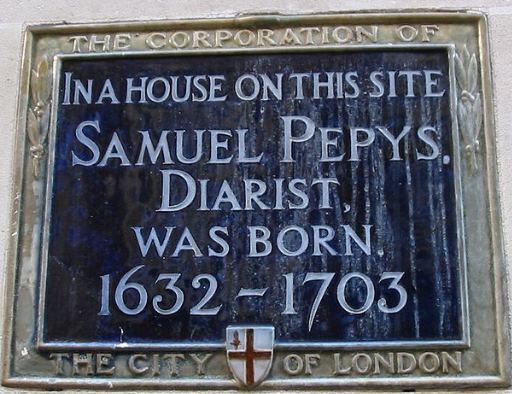Samuel Pepys
Parallel Lives
Samuel Pepys and his contemporaries. A series of ten talks available together or singly on request.
- The Year 1660
- Pepys and Milton
- Pepys and John Evelyn
- Pepys and Marvell
- Pepys and Bunyan
- The Year 1667
- Pepys and Dryden
- Pepys and The Royal Society
- Pepys and Aphra Behn
- Pepys and Defoe
Pepys 350
1660 (Pepys’s Diary) versus 2010 (Newsnight, C4 News and the Press)
A series of seven talks available together or singly on request.
- The Diary Begins – 1660 and the view from 2010
We start by entering into the mystery of why Pepys took it upon himself at that time in his life to keep a diary. Why that? Why then? Why him? Each talk will look back at Pepys’s just-completed month in 1660 and ours in 2010 and let the two run together, day by day. What is the news from each? Or is there nothing new under the sun?
THIS FEATURE IS IN PROGRESS. DETAILS OF INDIVIDUAL NIGHTS WILL FOLLOW.
- Januaries 1660 and 2010
- Februaries 1660 and 2010
- Marches 1660 and 2010
- Aprils 1660 and 2010
- Mays 1660 and 2010
- Junes and Julys 1660 and 2010
Pepys and the Great Fire
A Fire Sermon – 15 minutes
Reflections on the phenomenon of Fire, how we feel about it, and whether we can draw comfort and inspiration from Samuel Pepys’s performance when faced with one of the worst outbreaks of it this country had ever seen before the Blitz.
Three Lectures on the Great Fire: during, before, and after – 55 minutes each
Lecture 1: ‘An Infinite Great Fire’
Samuel Pepys was the as-it-happened commentator who re-invented the idea of the outside broadcast on paper after the model of Pliny writing about Pompeii. Pepys’s complete assurance as Our Man on the Spot who made do without either camera or microphone extended to his being the Man Who Knew What to Do In a Crisis. So he guides the unsteady King, replaces the dithering Lord Mayor, and even seems to stage-manage the unfolding disaster itself before re-capturing it all for generations to come in the Diary, with that same unblinking and determined flair for improvisation which makes him the indoor as well as the outdoor hero of the hour. (109 words)
Lecture 2: ‘Out of the Frying-Pan – the Fire as Pepys’s Destiny’
Pepys was roused at 3am on 2 September 1666 by news of the Fire, but he had been awake to the probability of sudden disaster since childhood in a City gripped by political turmoil leading to coup d’état. It was as though Destiny had trained him to feel not fear but a burning curiosity towards revolution, regime-change, war and plague. The outcome is not post-traumatic stress but well-tempered excitement.
By the time the Fire breaks out in his life, his Diary’s shorthand notation is as practised and precise as its author’s gaze. He misses nothing, and so nor do we. (100 words)
Lecture 3: ‘Fire, Phoenix, Future’
The Great Fire of London burned out after five days. It destroyed 13,200 houses, 87 of London’s 109 churches (including St Paul’s but saving St Olave’s) and 460 streets, and left four fifths of Londoners homeless, a quarter of whom would never return to live here. The estimated bill was well over a billion pounds. Xenophobia had fed on the flames and was newly rampant. So what was good about the Fire? Is there a sense in which this most spectacularly famous near-apocalyptic moment may have transformed the English zeitgeist, stiffened the sinew of our dealings with Europe, and focussed the future mind wonderfully? (104 words)

Pepys and Calamity
The annual Pepys Birthday Commemoration Lecture at St Olave, Hart Street – 2016 (20 minutes)
How Samuel Pepys, with a spirit combining the best of both Horatio and Tintin, faced up to disasters one after the other, thus proving the 20th century American pastor Harry Emerson Fosdick’s assertion that “He who knows no hardships will know no hardihood. He who faces no calamity will need no courage. Mysterious though it is, the characteristics in human nature which we love best grow in a soil with a strong mixture of troubles”.
Scheduled Events
Check all current events
Contact Us
...if you're interested in an event that isn't scheduled
Top picture:
Great Fire of London, painter unknown
Photo right: by Man Vyi
